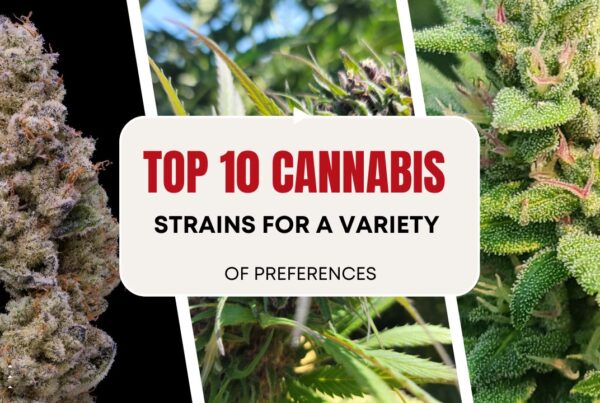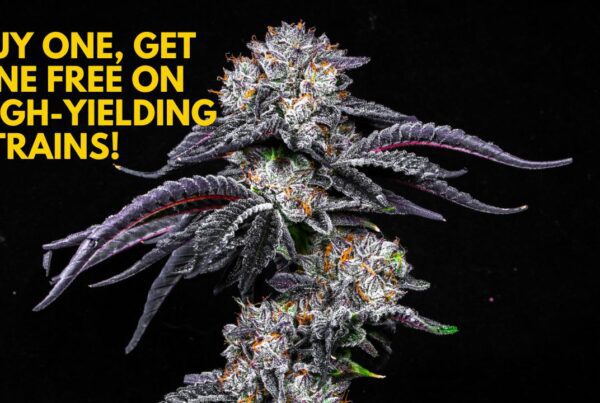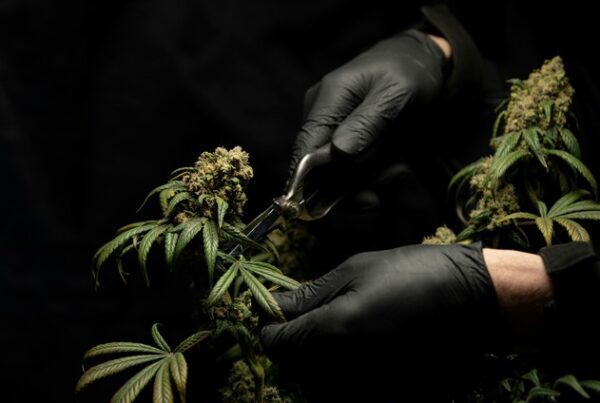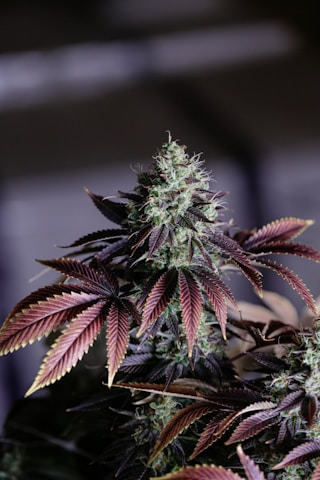Exploring the optimal temperature and humidity levels for autoflower cannabis
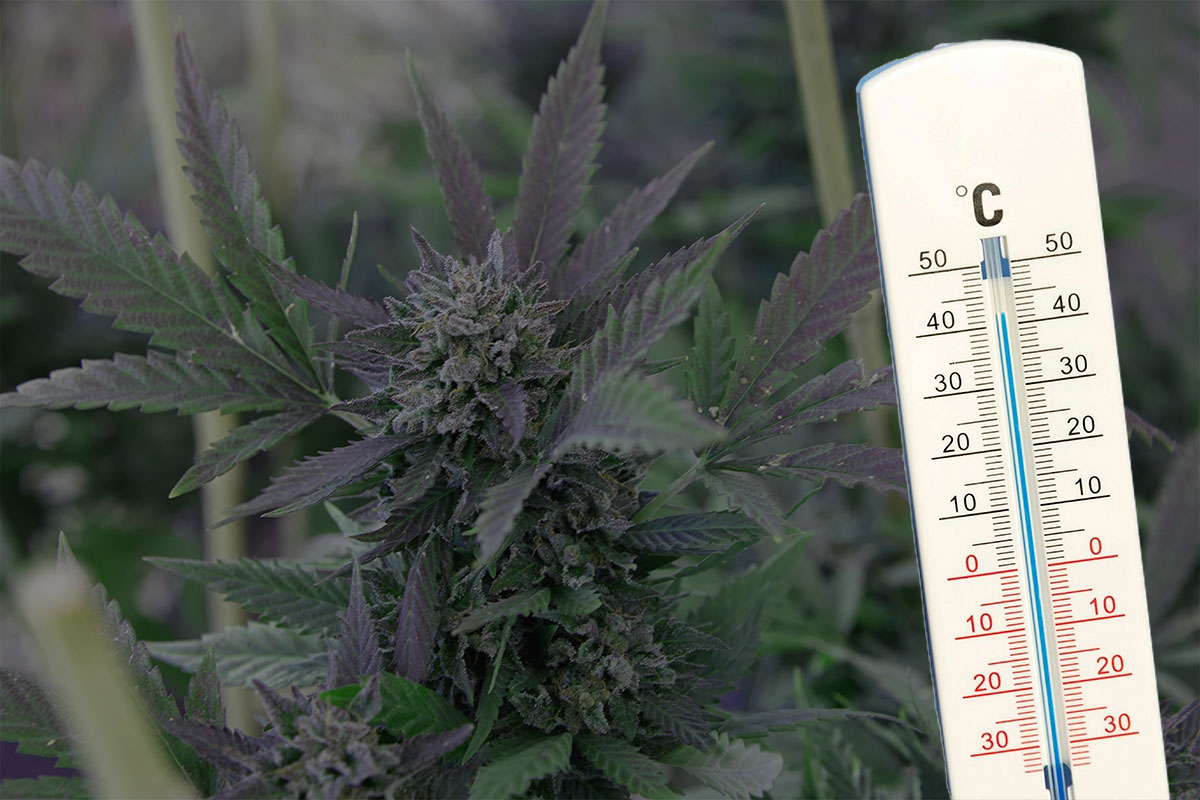
What is the best temperature and humidity for autoflower cannabis?
Exploring the optimal temperature and humidity levels for autoflower cannabis is crucial for successful cultivation. In this guide, we delve into the ideal environmental conditions that promote healthy growth and maximize yields. By understanding the interplay between temperature and humidity, cultivators can fine-tune their indoor or outdoor setups to create an environment where autoflower cannabis thrives. Join us as we uncover the science behind these critical factors and provide actionable tips to help you maintain the perfect climate for your autoflower cannabis plants.
Optimizing Growth Conditions for Autoflower Cannabis
Autoflower cannabis plants have specific temperature and humidity requirements throughout their growth stages to thrive and produce high-quality yields. Maintaining the ideal environmental conditions is crucial for maximizing growth and preventing stress-induced issues. Let’s delve into the optimal temperature and humidity ranges for each stage of autoflower cannabis growth.
Day and Night Cycles
During the day cycle, the ideal temperature for autoflower cannabis is. 75-79°F , while during the dark cycle, it should be slightly lower at. 71-73°F . Humidity levels should be maintained between. 50-60% . These conditions are vital for the overall health and development of autoflower cannabis plants.
Seedling Stage
In the seedling stage, which is the initial phase of growth, maintaining a humidity level of. 65-70% Is essential for promoting root development and ensuring proper nutrient uptake. The temperature range of. 68-77°F With lights on and. 8-9°F Lower with lights off mimics natural conditions, providing the seedlings with the right environment to establish themselves.
Vegetation Period
As the plants progress to the vegetation period, the humidity levels can gradually decrease to. 40-70% . This stage is crucial for vegetative growth, where the plants focus on developing strong stems and lush foliage. The temperature should be around. 71-82°F With lights on to support photosynthesis and overall growth.
Flowering Stage
Moving into the flowering stage, the humidity should be lowered to. 40-50% To prevent issues like mold and mildew, especially as the plants become more densely packed with buds. The temperature range of. 68-79°F During this stage encourages the development of dense and resinous buds.
Late Flowering Stage
In the late flowering stage, as the plants near maturity, humidity should be at. 30-40% To prevent any moisture-related problems during the crucial final weeks of flowering. The temperature around. 64-75°F With lights on helps to maintain the quality of the buds and preserve the terpene profile.
To ensure these conditions are met consistently, growers can utilize equipment like air conditioners, dehumidifiers, and fans to regulate temperature and humidity levels effectively. Monitoring these factors regularly and making adjustments as needed is key to achieving successful autoflower cannabis growth and maximizing yields. Proper ventilation is also essential to prevent heat and humidity buildup, which can lead to issues like pests and diseases. Additionally, maintaining a clean growing environment and ensuring adequate air circulation will contribute to healthy plant development.
Understanding the specific requirements of autoflower cannabis at each growth stage and providing the right conditions can lead to robust plants with potent flowers. By paying attention to temperature, humidity, and airflow, growers can optimize their cultivation practices and enjoy a successful harvest.
Strategies for Temperature and Humidity Regulation
- Essential Tools and Equipment for Controlling Temperature and Humidity
- The Role of Dehumidifiers and Air Conditioners in Achieving Optimal Conditions
- Investing in Hygrometers and Thermometers for Accurate Monitoring
- Practical Tips for Adjusting Environmental Conditions Effectively
- Implementing Proper Ventilation Systems to Regulate Airflow
- Utilizing Humidifiers and Fans to Fine-tune Humidity Levels
- Preventive Measures Against Mold Growth Through Proper Environmental Management
- Regular Inspections and Maintenance of HVAC Systems
- Maintaining Cleanliness and Proper Organization in Storage Areas
- Implementing Moisture Barriers and Sealants in Vulnerable Spaces
- Additional Considerations for Temperature and Humidity Regulation
- Understanding the Impact of Temperature and Humidity on Different Materials
- Exploring Energy-Efficient Solutions for Climate Control
- Incorporating Smart Technology for Remote Monitoring and Control
- Educating Personnel on the Importance of Proper Environmental Management
Conclusion: Achieving Ideal Temperature and Humidity Conditions for a Healthy Environment
Creating a Comfortable and Safe Space with Adequate Temperature and Humidity Control is Essential for Both Human Health and Preservation of Goods. It is crucial to consider the specific requirements of different items in storage or living spaces to ensure longevity and quality. By understanding the unique needs of various materials such as wood, electronics, fabrics, and artwork, one can tailor the temperature and humidity settings accordingly. Energy-efficient solutions not only help in cost savings but also contribute to environmental sustainability. Smart technology advancements allow for seamless monitoring and adjustments, providing convenience and precision in regulating environmental conditions. Proper education and training of individuals responsible for maintaining these conditions are vital to ensure consistency and effectiveness in temperature and humidity regulation practices.
Techniques for Drying and Curing Autoflower Cannabis
When it comes to cultivating autoflower cannabis, proper drying and curing techniques are essential for maximizing the quality and potency of the final product. These techniques involve a combination of controlling temperature, humidity, airflow, and utilizing the right tools and equipment. Maintaining optimal environmental conditions during the drying and curing stages is crucial for ensuring that the harvested crop retains its flavor, aroma, and medicinal properties. Let’s delve deeper into the techniques for drying and curing autoflower cannabis to understand their significance in producing top-quality yields.
Equipment Selection
One of the key considerations when setting up the drying and curing process is the selection of equipment. Cultivators need to invest in tools such as air conditioners, dehumidifiers, humidifiers, and portable heaters to create the ideal conditions for drying and curing. These tools help in regulating temperature and humidity levels, which are critical factors affecting the growth and development of autoflower cannabis plants. By maintaining the recommended temperature range of 59-71°F and humidity around 50%, cultivators can prevent mold contamination and preserve the terpene profile of the plants, ultimately enhancing the overall quality of the harvest.
Airflow and Ventilation
Proper airflow and air exchange are equally important during the drying and curing stages. Adequate ventilation helps in preventing moisture buildup, which can lead to mold growth and spoilage of the crop. Ensuring good air circulation within the drying room promotes even drying of the buds and prevents the development of molds and mildews. Additionally, practicing proper watering techniques throughout the growth cycle is essential for maintaining plant health and avoiding issues related to overwatering or underwatering.
Duration of Drying and Curing
Moreover, the duration of the drying and curing process also plays a significant role in determining the final quality of autoflower cannabis. While it is essential to follow general guidelines, cultivators may need to adjust the drying time based on environmental conditions and the specific characteristics of the strain being cultivated. By monitoring the plants closely and making necessary adjustments, cultivators can achieve the desired flavor, potency, and overall characteristics of the final product.
Conclusion
Mastering the techniques for drying and curing autoflower cannabis is a vital aspect of successful cultivation. By paying attention to details such as temperature, humidity, airflow, equipment selection, and proper plant care practices, cultivators can ensure that their harvest yields premium-quality buds with enhanced potency and aroma.
Past Error in Output: An error to avoid in the future
Optimizing Humidity Control During Different Growth Phases
Proper humidity control is essential for the successful growth of autoflower cannabis plants through different growth phases. Understanding the ideal humidity levels for each stage – seedling, vegetation, and flowering – is crucial to ensuring healthy plant development and maximizing yield.
During the seedling stage, maintaining a humidity level of 65-70% is optimal for seed germination and early growth. As the plants transition to the vegetation period, humidity levels can gradually be reduced by 5% each week, within a range of 40-70%. This gradual reduction helps the plants acclimate to lower humidity levels without causing stress.
In the flowering phase, humidity levels should be further lowered to 40-50%, with a strict limit not to exceed 60%. High humidity during flowering can lead to issues such as mold and bud rot, compromising the quality of the harvest. During the late flowering stage, humidity should be maintained at 30-40% to prevent any moisture-related problems.
To adjust humidity levels effectively, growers can implement various strategies. Increasing airflow within the grow space, providing fresh and cool air, and watering plants immediately after lights on can help lower humidity levels. Conversely, to raise humidity, methods such as misting with a spray bottle, keeping the soil moist, or using wet towels/cloths in the grow room can be employed.
Temperature also plays a critical role in plant growth and should be carefully regulated throughout the different growth phases. For seedlings, a temperature range of 68-77°F with lights on and slightly lower temperatures when lights are off is recommended. During the vegetation period, temperatures ranging from 71-82°F with similar adjustments for light cycles promote healthy growth.
In the flowering stage, maintaining temperatures between 68-79°F is ideal, ensuring that high temperatures are avoided to prevent heat stress. As plants reach the late flowering stage, the temperature should be maintained at 64-75°F with appropriate adjustments for light cycles to support the final stages of flower development.
To lower temperatures effectively, growers can enhance airflow and air exchange, utilize cooling methods like a cool tube with High-Pressure Sodium lights, or consider installing air conditioning. Conversely, increasing temperatures can be achieved by upgrading grow lights, using heating mats, or employing space heaters with reliable thermostats.
By closely monitoring and adjusting humidity and temperature levels according to the specific requirements of each growth phase, growers can create optimal conditions for autoflower cannabis plants, leading to healthier plants and improved yields.
Troubleshooting High Humidity and Temperature Issues
High humidity and temperature levels can create a myriad of challenges in various environments, from homes to offices. Identifying and addressing these issues promptly is crucial to prevent further damage and ensure a comfortable and healthy space. In this blog section, we will delve into the common problems associated with high humidity and temperature, as well as effective measures to combat mold growth under such conditions.
Identifying High Humidity and Temperature Challenges
Signs of High Humidity
- Condensation on windows and walls
- Musty odors
- Mold and mildew growth
- Allergy symptoms
Effects of High Temperature
- Discomfort
- Reduced air quality
- Accelerated mold growth
Addressing High Humidity and Temperature Issues
Proper Ventilation
- Use exhaust fans in kitchens and bathrooms
- Ensure proper circulation of air
Dehumidification
- Invest in a dehumidifier
- Use moisture-absorbing products
Temperature Control
- Set the thermostat to an optimal level
- Use air conditioning or fans
Combatting Mold Growth
Regular Cleaning
- Keep surfaces dry and clean
- Use mold-inhibiting cleaners
Humidity Monitoring
- Use hygrometers to measure humidity levels
- Maintain indoor humidity below 60%
Proper Insulation
- Insulate walls and windows to prevent condensation
Importance of Timely Action
Addressing high humidity and temperature issues promptly is essential to prevent not only structural damage but also potential health risks associated with mold growth and poor indoor air quality. Mold spores thrive in humid environments, leading to respiratory issues and allergies in occupants. By promptly identifying the signs of high humidity and temperature, individuals can take proactive measures to safeguard their living or working spaces.
Professional Assistance
In cases where high humidity and temperature issues persist despite individual efforts, seeking professional help is advisable. HVAC technicians, indoor air quality specialists, and mold remediation experts can provide tailored solutions to address specific challenges. Professional assessment and remediation services can help in identifying underlying issues and implementing long-term strategies to maintain optimal indoor conditions.
Home Maintenance Tips
Apart from addressing immediate concerns, regular home maintenance plays a crucial role in preventing high humidity and temperature issues. Simple tasks like fixing leaks, maintaining HVAC systems, and ensuring proper insulation can significantly contribute to a healthier indoor environment. Additionally, practicing good ventilation habits, such as opening windows during dry seasons and using exhaust fans, can aid in controlling humidity levels.
By combining proactive measures, professional guidance, and consistent home maintenance practices, individuals can effectively troubleshoot high humidity and temperature issues, creating a more comfortable and sustainable living or working environment. Stay informed, stay vigilant, and prioritize indoor air quality and comfort for a healthier lifestyle.
Enhancing Crop Quality through Proper Temperature and Humidity Management
In the realm of cannabis cultivation, the quality of the crop is paramount. One of the key factors that significantly influences the quality of cannabis crops is the management of temperature and humidity levels within the cultivation environment. By understanding the impacts of a controlled environment on cannabis crop quality, growers can optimize their cultivation practices to achieve superior results.
Impacts of Controlled Environment on Cannabis Crop Quality
Enhanced Cannabinoid Production:
Maintaining optimal temperature and humidity levels can directly impact the production of cannabinoids in cannabis plants. By creating a stable environment, growers can promote the synthesis of cannabinoids, ultimately enhancing the potency of the final product.
Improved Terpene Profiles:
Terpenes play a crucial role in the aroma and flavor of cannabis strains. Precise temperature and humidity control can help preserve and even enhance the terpene profiles of different cultivars, leading to a more aromatic and flavorful end product.
Consistent Growth Patterns:
Fluctuations in temperature and humidity can disrupt the growth patterns of cannabis plants, leading to irregular development and potentially lower yields. By providing a stable environment, growers can ensure consistent growth, resulting in higher-quality crops.
Benefits of Maintaining Optimal Temperature and Humidity
Increased Yield Potential:
Optimal temperature and humidity levels create ideal conditions for cannabis plants to thrive, resulting in increased yields per harvest. By fine-tuning these environmental factors, growers can maximize their overall crop productivity.
Pest and Disease Prevention:
Proper temperature and humidity management can act as a preventive measure against common pests and diseases that thrive in specific environmental conditions. By controlling these factors, growers can reduce the risk of infestations and plant health issues.
Overall Quality and Consistency:
Ultimately, the combined effect of maintaining optimal temperature and humidity levels is seen in the overall quality and consistency of the final product. By prioritizing these environmental factors, growers can produce high-quality cannabis with consistent characteristics desired by consumers.
Proper temperature and humidity management are essential aspects of enhancing crop quality in cannabis cultivation. By recognizing the impacts of a controlled environment and reaping the benefits of optimal conditions, growers can elevate the quality, potency, and overall success of their harvests.
Conclusion
Achieving the ideal temperature and humidity levels is crucial for the successful cultivation of autoflower cannabis. By maintaining temperatures between 70-85°F (21-29°C) and humidity levels between 40-70%, growers can optimize growth, maximize yields, and minimize the risk of pests and diseases. It is essential to monitor and adjust these environmental factors throughout the plant’s lifecycle to ensure healthy development and high-quality harvests. By prioritizing the proper temperature and humidity conditions, cultivators can set themselves up for a rewarding and successful autoflower cannabis cultivation experience.

